Understanding the Carevoyant Mobile App
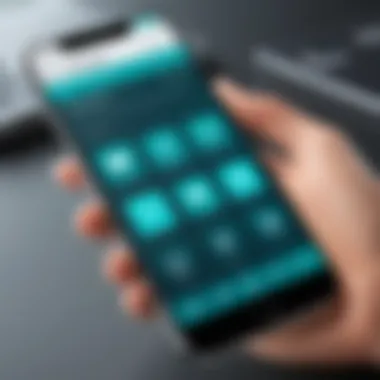
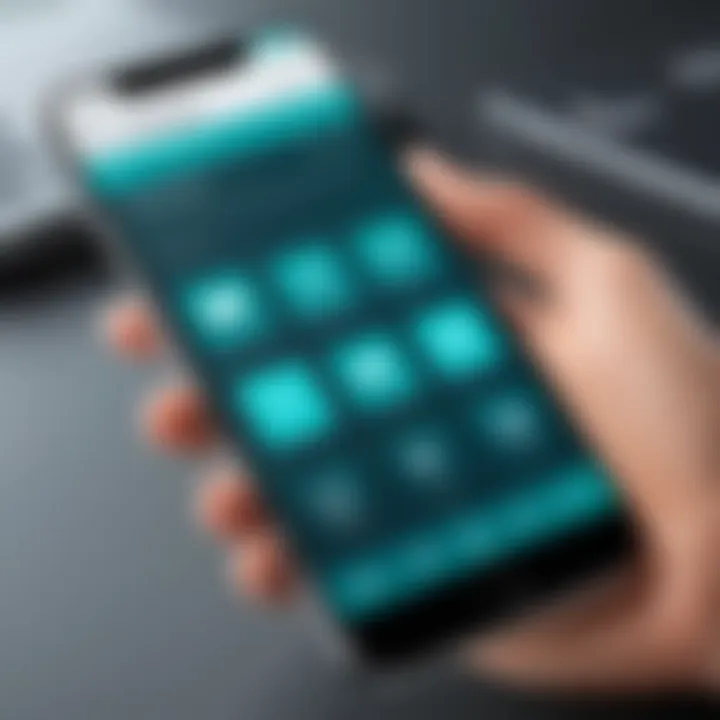
Intro
The Carevoyant mobile app is pivotal for healthcare professionals seeking efficiency. With its emphasis on effective communication and data management, it streamlines operations across various healthcare settings. This article provides a deep dive into its features, benefits, and challenges, offering valuable insights for industry decision-makers.
Key Features and Functionalities
Comprehensive Overview
The Carevoyant mobile app is equipped with several key functionalities designed to enhance the overall efficiency of healthcare operations. Among its principal offerings are task management tools, secure messaging, and real-time data access. These features allow healthcare providers to collaborate and share information fluidly, thus reducing delays in care delivery.
Some notable features include:
- Task Management: Enables users to assign and track tasks effectively.
- Secure Messaging: Facilitates confidential communication between healthcare team members.
- Real-time Data Access: Provides immediate access to patient records and other critical information.
- Reporting Tools: Helps in generating reports that are vital for assessments and decision-making.
Target Users
The app is tailored primarily for healthcare professionals, including doctors, nurses, administrative staff, and IT personnel. Each of these users finds distinct value, from improved workflow to enhanced patient care.
Doctors and Nurses benefit from immediate access to patient information and a streamlined communication channel, allowing them to focus more on quality care.
Administrative Staff can manage schedules and tasks efficiently, contributing to a smoother operation overall.
IT Professionals gain insights into system integration, ensuring that the app aligns with existing healthcare technologies, such as Electronic Health Record (EHR) systems.
"A well-integrated mobile application can drastically enhance coordination and agility in healthcare provision."
Pricing Models and Cost Analysis
Breakdown of Pricing Tiers
Understanding the pricing structure of the Carevoyant mobile app is essential for any organization looking to implement it. The app generally offers several pricing tiers, which are typically based on the size of the healthcare practice and the specific features required.
- Basic Tier: Often includes core functionalities suitable for small practices.
- Standard Tier: Adds more advanced features, ideal for medium-sized healthcare operations.
- Premium Tier: Full access to all functionalities, typically designed for large organizations with complex needs.
Additional Costs to Consider
In addition to the base pricing, there may be additional costs to consider when using the Carevoyant app. These include:
- Setup Fees: Initial fees for installation and configuration.
- Training Costs: Investment in training staff to effectively use the app.
- Maintenance Fees: Ongoing expenses related to software updates and technical support.
Evaluating these costs is critical for decision-makers as they assess the overall return on investment.
Carevoyant represents a significant step forward in enabling effective healthcare delivery and management. Understanding its features, pricing, and user benefits is key for anyone considering its implementation in a healthcare setting.
Prelude to Carevoyant Mobile App
The Carevoyant mobile app plays a crucial role in modern healthcare operations. It aims to address the complex challenges faced by various sectors in the healthcare industry. The increasing demand for efficient communication and streamlined data management is reshaping how healthcare providers operate. Understanding the capabilities of the Carevoyant mobile app is essential for decision-makers and IT professionals in healthcare settings.
Overview of the Healthcare Landscape
The healthcare landscape is increasingly complex. It involves multiple stakeholders, including healthcare providers, patients, insurers, and regulatory bodies. These players are constantly navigating a myriad of data and communication flows. The advent of digital tools has become necessary for enhancing operational efficiency. The Carevoyant mobile app is positioned as a solution to these challenges by providing a cohesive platform for managing healthcare workflows.
- Increasing Patient Demand: Patients expect better access to their health information and streamlined communication with providers.
- Regulatory Pressures: Compliance with laws like HIPAA necessitates robust data management and communication systems.
- Technological Advancements: The shift towards digitization has led to the need for effective software solutions that integrate easily with existing systems.
Emergence of Mobile Applications in Healthcare
Mobile applications have emerged as fundamental tools in healthcare. They facilitate real-time access to information and enhance communication among various participants in the healthcare ecosystem. The Carevoyant mobile app exemplifies this trend. Here are some key considerations regarding this emergence:


- Convenience and Accessibility: By using mobile applications, healthcare professionals can access vital information on-the-go, improving responsiveness.
- Streamlined Processes: Mobile tools help automate routine tasks, enabling providers to focus on delivering quality care.
- Enhanced Engagement: Patients can engage more actively in their care through mobile applications, leading to better outcomes.
The Carevoyant mobile app is at the forefront of this digital transformation. By understanding its functionalities, healthcare professionals can better optimize their operations and improve patient care.
Key Features of Carevoyant Mobile App
The Carevoyant mobile app stands out in the crowded landscape of healthcare technology. Its key features play a critical role in enhancing operational efficiency, managing data, and facilitating communication among professionals. Understanding these core functionalities gives stakeholders a clear view of how Carevoyant can impact their daily operations and patient care.
User-Focused Design
The design of the Carevoyant mobile app emphasizes user experience. It is essential that healthcare professionals, who often work under pressure, find the app intuitive and easy to navigate. The layout is straightforward with a focus on functionality. This helps users to quickly access information they need without unnecessary complexity.
Accessibility is a priority. Options for font sizes, color contrasts, and layout adjustments cater to diverse user needs. Simplicity in navigation reduces training time, allowing professionals to focus on patient care rather than the technology. User testing and feedback are integral parts of the design process, ensuring continuous improvement based on actual user experiences.
Data Management Capabilities
Data management is a cornerstone of the Carevoyant app. Efficient data handling allows healthcare providers to store, retrieve, and analyze patient information seamlessly. This reduces redundancies and mitigates errors that can have serious implications in patient care.
The app features robust data integration options, which allow it to work harmoniously with existing electronic health records. This interoperability ensures that users have access to comprehensive patient information at their fingertips. Additionally, the ability to manage appointments, prescriptions, and billing through one platform enhances overall organizational efficacy.
Real-time data updates ensure that all stakeholders have the most current information. This reduces the chances of outdated or erroneous data impacting patient outcomes. The ability to generate reports easily provides insights into operational effectiveness and patient care trends, further making it a valuable tool for decision-making.
Real-Time Communication Tools
Effective communication is paramount in healthcare settings. Carevoyant addresses this need through its suite of real-time communication tools. The app supports instant messaging, video calls, and secure sharing of documents, allowing for immediate collaboration among healthcare team members.
These tools not only facilitate quick discussions regarding patient care but also help in scheduling and coordinating tasks. This immediacy ensures that care teams can resolve issues swiftly and maintain a high level of patient engagement. User feedback often highlights the benefit of having communication integrated into a single platform, as it reduces the need for multiple applications and streamlines operations.
Benefits of Using Carevoyant
The Carevoyant mobile app provides various advantages that are crucial for effective healthcare operations. In this section, we will outline how the app enhances workflow efficiency, boosts patient engagement, and supports data-driven decision-making. These benefits not only improve organizational performance but also contribute to better patient outcomes, making Carevoyant an essential tool for healthcare professionals.
Enhanced Workflow Efficiency
One of the most significant benefits of the Carevoyant mobile app is the enhanced workflow efficiency it offers. By streamlining processes, it allows healthcare providers to focus more on patient care and less on administrative tasks. Integration of various functions into a single app reduces the need to switch between multiple systems, which can often lead to errors and delays.
The app's user-centric design simplifies navigation and minimizes training time for staff. Users can quickly access important patient information, appointment schedules, and task lists, thus improving overall productivity. Moreover, automated reminders for appointments and follow-ups help to reduce no-show rates, ensuring more efficient use of time and resources.
"A streamlined workflow is essential in care delivery, as it directly impacts the quality of service provided."
Improved Patient Engagement
Improving patient engagement is another vital advantage of the Carevoyant mobile app. The app facilitates direct communication between healthcare providers and patients, enhancing the overall experience. Patients can access their health records, appointment details, and even educational resources related to their conditions.
This transparency encourages patients to take an active role in their health management. When patients are more informed, they are likely to adhere to treatment plans and follow up on recommendations from their healthcare providers. The result is a more collaborative approach to health care, which can lead to better health outcomes.
In addition, Carevoyant's features that enable feedback collection help providers understand patient concerns and preferences, allowing them to tailor their services further.
Data-Driven Decision Making
Data-driven decision making is crucial in today’s healthcare environment, and Carevoyant facilitates this by providing real-time data analytics. This capability allows healthcare professionals to track a variety of metrics, including patient outcomes, service efficiency, and operational costs. By analyzing this data, decision-makers can identify trends and make informed adjustments to improve care delivery.
Furthermore, the app enables custom reporting, which can help stakeholders visualize data that is most relevant to their specific needs. Utilizing accurate data allows healthcare organizations to allocate resources more effectively and identify areas that necessitate attention.
In summary, the benefits of using the Carevoyant mobile app are multifaceted. From enhancing workflow efficiency to driving patient engagement and facilitating data-driven decisions, it supports healthcare providers in delivering better care. The integration of these elements fosters a more efficient healthcare system, ultimately benefiting patients and professionals alike.
Integration with Existing Healthcare Systems
The integration of the Carevoyant mobile app with existing healthcare systems is vital for delivering efficient care. Organizations are increasingly relying on various software solutions to manage patient data, streamline operations, and ensure compliance with regulations. A seamless integration allows healthcare professionals to access critical information quickly, facilitating informed decision-making. Moreover, this integration not only enhances operational efficiency but also reduces the likelihood of errors in patient care.
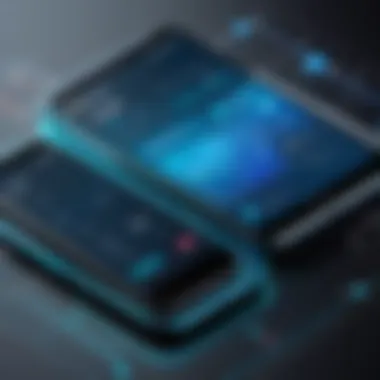
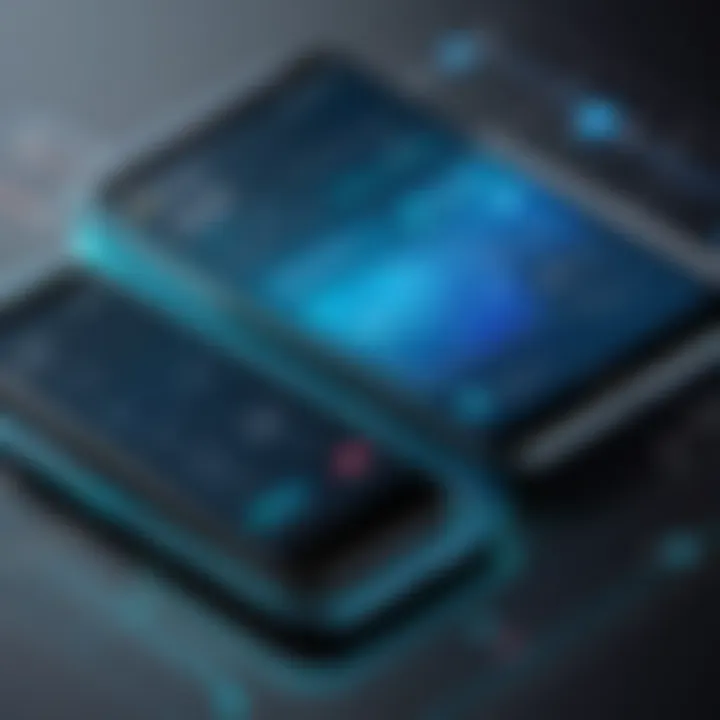
Interoperability Challenges
Interoperability refers to the ability of different systems to communicate and work together effectively. In the context of healthcare, achieving interoperability is crucial yet often problematic. One major challenge includes differing data standards across systems. For example, electronic health records (EHR) and practice management systems may utilize varied formats or terminologies, complicating data sharing.
Another significant barrier is the legacy systems that many healthcare organizations still use. These systems might not support modern integration methods, creating obstacles for new applications like Carevoyant. Security concerns also play a role since health data is sensitive, necessitating strict compliance with regulations such as HIPAA. Ensuring that all connected systems maintain data privacy can limit options for seamless integration.
Compatible Software Solutions
To address interoperability challenges, selecting compatible software solutions is essential. Carevoyant has made strides in this area by partnering with products like Epic and Cerner, two prominent EHR systems. By establishing reliable data exchange pathways with these platforms, Carevoyant enhances the accessibility of patient information across different healthcare settings.
Furthermore, utilizing middleware solutions can help bridge gaps between disparate systems. Middleware serves as a translator, allowing data to be exchanged in real-time, regardless of the original formats used. This type of technology can provide a flexible means to adapt during integration efforts.
Optimizing integration involves ensuring adherence to shared standards, such as HL7 or FHIR, which facilitate easier communication between various healthcare applications. These standards allow data to flow smoothly, reducing the workload on healthcare staff and bolstering patient care outcomes.
"Integrating with existing systems is not just about technology; it's about rethinking workflows and enhancing patient safety."
User Experience and Feedback
User experience (UX) plays a crucial role in the adoption of any healthcare application, including the Carevoyant mobile app. Understanding how users interact with the app influences its design, functionality, and overall satisfaction. A positive user experience enhances clinical workflows, promotes efficiency, and ultimately improves patient care. Therefore, collecting feedback on user experiences is essential to continuously refine the app's features and usability.
Case Studies of Implementations
Examining specific case studies where the Carevoyant mobile app has been implemented offers rich insights into its effectiveness in real-world settings. For instance, a home health agency that adopted Carevoyant was able to reduce documentation errors by 40%. This significant decrease illustrates the app's streamlined data entry tools and its push for compliance with industry standards.
In another case, a hospital utilized the app for mobile rounding. Doctors reported that they could access real-time patient data and collaborate more effectively with nursing staff. This enhanced workflow led to improved patient outcomes and higher staff morale. These examples show how varied healthcare settings benefit from the app's capabilities, adapting to their unique needs while enhancing overall productivity.
User Satisfaction Metrics
User satisfaction metrics are indispensable to gauge the success of the Carevoyant mobile app. Surveys and feedback forms are routinely employed to assess various aspects such as user interface design, performance, and support services. Key metrics include:
- Net Promoter Score (NPS): This score indicates users' willingness to recommend the app to others, reflecting overall satisfaction.
- User Retention Rate: A high retention rate signifies that users find value in the app, crucial for long-term adoption.
- Task Completion Time: The efficiency with which users can complete tasks reveals much about the app's usability.
Collectively, these metrics create a framework for understanding user experiences. By prioritizing user feedback, Carevoyant can adapt and innovate, ensuring it remains relevant and effective in a rapidly changing healthcare landscape.
"User-centric design not only improves functionality but also increases trust and reliance on digital health solutions."
Regulatory Considerations and Compliance
Understanding regulatory considerations and compliance is critical when discussing the Carevoyant mobile app. This focus on regulations ensures healthcare providers can operate within legal frameworks while maintaining patient safety and data security. Compliance with healthcare regulations not only fosters patient trust but also enhances the app’s longevity and effectiveness in an evolving industry.
Key regulations that impact healthcare applications include the Health Insurance Portability and Accountability Act (HIPAA) and various state laws concerning data usage and privacy. These regulations set forth the framework for safeguarding sensitive patient information and impose severe penalties for non-compliance.
The importance of these considerations is twofold. Firstly, they protect patient data from breaches and misuse. Secondly, they set a standard for software developers and healthcare institutions to meet, promoting high-quality services across the board.
HIPAA Compliance
HIPAA compliance is a fundamental element for any healthcare-related application, including the Carevoyant mobile app. HIPAA establishes national standards for the protection of individually identifiable health information. Hence, any application serving healthcare providers must ensure it operates in compliance with this act.
For the Carevoyant app, HIPAA compliance requires that the app incorporates necessary safeguards to protect patient data. This can include:
- Encryption of data, both at rest and in transit, to prevent unauthorized access.
- Auditing trails to track who accesses patient information and when.
- Strict user authentication measures to limit access to authorized personnel only.
By achieving HIPAA compliance, Carevoyant can assure both providers and patients that sensitive information remains confidential and secure.
Data Privacy Concerns
Data privacy concerns are at the forefront of discussions surrounding healthcare technology. With increased data collection and use, patients are becoming more wary of how their information is handled. The Carevoyant app must address these concerns to maintain user trust.
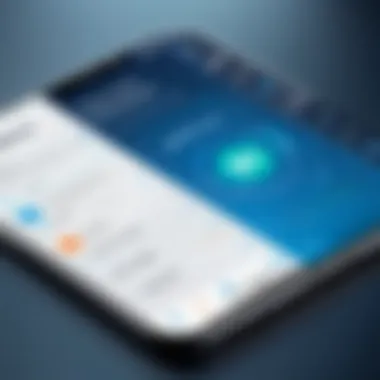
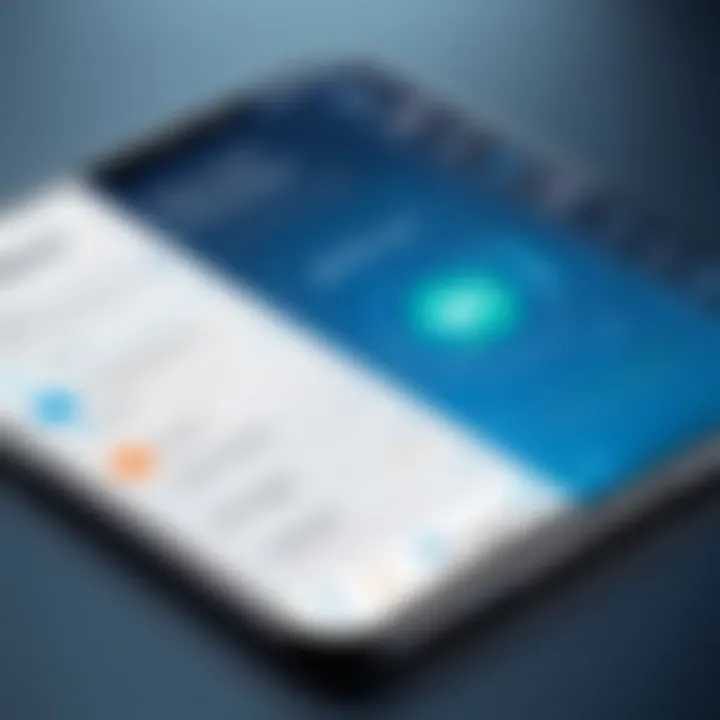
Some key aspects to consider include:
- Transparency in data handling practices. Users should understand exactly what information is being collected, how it is used, and who it is shared with.
- User consent, providing clear options for patients to agree to their information sharing before any data is collected.
- Regular assessments of privacy policies to adapt to new regulations or changes in user expectations.
Addressing these data privacy concerns is essential for the ongoing viability of the Carevoyant mobile app. It helps build a strong reputation and fosters a secure environment for both patients and healthcare professionals.
Challenges and Limitations
In the rapidly evolving landscape of healthcare technology, the Carevoyant mobile app faces several challenges and limitations. Recognizing these factors is essential for stakeholders to make informed decisions about its adoption and integration into healthcare settings. Not only will this section outline specific obstacles, but it will also delve into the implications of these challenges on overall implementation and user experience.
Technical Barriers
One primary technical challenge is the need for seamless integration with existing healthcare systems. Many healthcare facilities already utilize specific software solutions that may not easily interface with Carevoyant. This situation can lead to difficulties in data sharing and communication, thus hindering the app's effectiveness in streamlining operations.
Moreover, there is often an issue of data security. The sensitive nature of healthcare information necessitates robust security protocols. When adopting new technology, ensuring that the Carevoyant app meets high standards for data encryption and secure access is vital. Any lapses in security could result in significant legal ramifications and damage to patient trust.
Another technical barrier is the varying levels of technological literacy among users. Not every healthcare professional has the same proficiency with mobile applications. Training and resources must be made available to ensure users can effectively utilize the full range of features offered by Carevoyant.
User Adoption Issues
User adoption stands as a significant hurdle in the successful implementation of the Carevoyant mobile app. Many healthcare workers may be reluctant to shift from traditional methods or familiar systems to a new digital tool. This resistance is often rooted in a fear of the unknown or concerns over potential disruptions to their workflow.
Change management becomes crucial in this context. Engaging users in the early stages of implementation can foster a sense of ownership. Providing comprehensive training sessions and ongoing support can alleviate fears and build confidence around using the new app.
Moreover, feedback loops between users and developers should be established to continuously refine the app based on actual user experience. Users often have valuable insights into what works or what does not, and taking their opinions into account can enhance the app's utility.
In summary, while the Carevoyant mobile app presents numerous opportunities for enhancing healthcare operations, challenges like technical barriers and user adoption issues cannot be overlooked. Understanding these limitations will allow healthcare professionals to strategize effectively and maximize the benefits of this innovative technology.
Future of Carevoyant Mobile App
The future of the Carevoyant mobile app is intrinsically linked to the evolving landscape of healthcare technology. As digital solutions increasingly shape the industry, understanding potential advancements can be crucial. This section delves into predicted trends and required enhancements, which are vital for health professionals and decision-makers.
Predicted Trends in Healthcare Technology
The healthcare sector is undergoing significant transformation, driven by technology. The Carevoyant app is poised to adapt to several predicted trends that will influence its future functionality. Among these trends are:
- Telehealth Advancement: As remote care becomes a norm, the Carevoyant app may integrate more robust telehealth features. This includes high-quality video conferencing capabilities, which assist healthcare professionals in providing care without geographical barriers.
- AI and Machine Learning: Artificial Intelligence can enhance the app's data management capabilities. Predictive analytics could allow healthcare providers to anticipate patient needs and improve treatment outcomes. The integration of AI tools for data analysis may soon become standard.
- Wearable Device Integration: Health monitoring devices are growing in popularity. Carevoyant may leverage this trend by integrating with wearables to provide real-time health data to care teams, improving patient follow-up and response rates.
- Focus on Patient-Centered Care: There will be an increasing emphasis on enhancing patient engagement. Carevoyant might evolve to offer personalized content and communication strategies tailored to individual patient needs and preferences.
In summary, these trends present opportunities and expectations for the future development of the Carevoyant mobile app, ensuring it continues to align with the demands of the healthcare sector.
Potential Enhancements and Updates
Future enhancements to the Carevoyant app will depend on user needs, technological advances, and regulatory requirements. Some potential updates that could be beneficial includes:
- User Interface Refinements: Improving the user interface to make it more intuitive can enhance user experience, leading to better adoption rates by healthcare professionals.
- Data Security Protocols: As cybersecurity threats grow, Carevoyant must continually evolve its security features to ensure compliance with regulations and protect sensitive patient data. This may involve adopting advanced encryption methods and regular vulnerability assessments.
- Interoperability Improvements: Enhancements allowing the Carevoyant app to seamlessly communicate with other healthcare systems can streamline processes for healthcare organizations, thus improving overall care delivery.
- Feedback Loops: Implementing features that allow users to provide feedback on the app’s functionality can guide future updates. This could be accomplished through integrated survey tools or direct communication channels with the development team.
As Carevoyant anticipates these enhancements, it is crucial that they stay aligned with the technological landscape and the evolving needs of healthcare professionals. Looking ahead, the mobile app holds significant potential to revolutionize how care is delivered and managed.
End
The conclusion serves as a pivotal aspect of this article, synthesizing the critical insights presented about the Carevoyant mobile app. It encapsulates the key findings discussed throughout, ensuring that readers retain the essential elements relevant to decision-making in healthcare technology. Highlighting the app's functionalities, the benefits of its usage, and potential challenges faced in implementation crystallizes the significance of the Carevoyant app within the broader context of healthcare operations.
Recap of Key Insights
The Carevoyant mobile app proves to be a transformative tool within the healthcare landscape. A few key insights include:
- User-Focused Design: The app emphasizes ease of use, promoting efficient workflows upheld by intuitive navigation.
- Data Management Capabilities: Enhanced data handling improves patient care and operational transparency.
- Real-Time Communication: Effective tools foster collaboration among caregivers and enhance patient engagement.
These insights should guide healthcare professionals towards understanding its potential impact on their practice.
Final Thoughts on Carevoyant's Impact
As healthcare evolves through technological innovation, the Carevoyant mobile app exemplifies how a focused application can streamline processes. Its greatest strength lies in bridging communication gaps and optimizing data management. For decision makers, the integration of such a solution may significantly influence overall care delivery.
The implementation of the Carevoyant app not only improves workflow but also enhances patient experiences, making it a critical consideration for future investments in healthcare technology.















